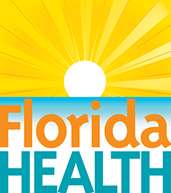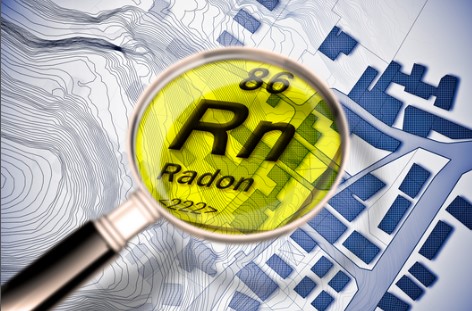Radon
Florida Department of Health in St. Johns County Environmental Public Health Program
- 904-506-6081
- SJCHD.EH@flhealth.gov
-
Fax
904-428-5659 -
Mailing Address
200 San Sebastian View
St. Augustine, FL, 32084
You cannot see it, smell it, or taste it. Radon, a Class A carcinogen, is the second cause of lung cancer. Radon is responsible for more than 21,000 lung cancer deaths a year (one every 25 minutes). In Florida, one in five homes tested has elevated radon levels above the action level of 4 pCi/L. Elevated radon levels have been found in all types of buildings, including manufactured homes, schools and high-rise condominiums.
Radon is 2nd LARGEST cause of LUNG CANCER
Radon comes from the radioactive breakdown of naturally occurring radium found in most soils. As a gas in the soil, it enters buildings through small openings in the foundation. Since the building can hold the radon similarly to smoke trapped under a glass, indoor radon concentrations can increase to many times that of outdoor levels. The only way to know the radon levels in your home is to test.
Radon is a colorless, odorless and tasteless gas that forms naturally in soil and rock throughout the world. Outdoor levels are usually low. Indoors, radon can be found at higher levels. Radon is found in commercial buildings, houses,schools, high rises, etc.
In the U.S., radon is the leading cause of lung cancer among non-smokers.
Yearly Deaths:- Radon: 21,000
- Secondhand Smoke: 3,000
- All buildings and houses should be tested
- Constructing a new house or building? Look into radon-resistant techniques.
- Stop smoking - If you are exposed to radon, smoking can increase lung cancer risk.
- DIY - Buy a radon gas test kit and follow the directions.
- OR - Hire a certified radon measurement business.
- Did you know?
- Picocurie per liter, or pCi/L, measures radon levels.
- No radon level is safe.
- A level at or above 4pCi/L is considered high.
- 1 in 5 Florida Homes has an elevated radon level.
If your radon level is elevated, your next step is to reduce radon levels to safer limits:
- Contact a certified radon mitigator
- Or call the Florida Radon and Indoor Air Program
- 1-800-543-8279
- Learn more at Radon.FloridaHealth.gov
Florida Health Office of Communications
For more information, contact:
Florida Department of Health
Radon and Indoor Air Program
4052 Bald Cypress Way Bin A08
Tallahassee, Florida 32399-7017
800-543-8279
850-245-4288
Radon.FloridaHealth.gov
EPA.gov/Radon




Connect with DOH